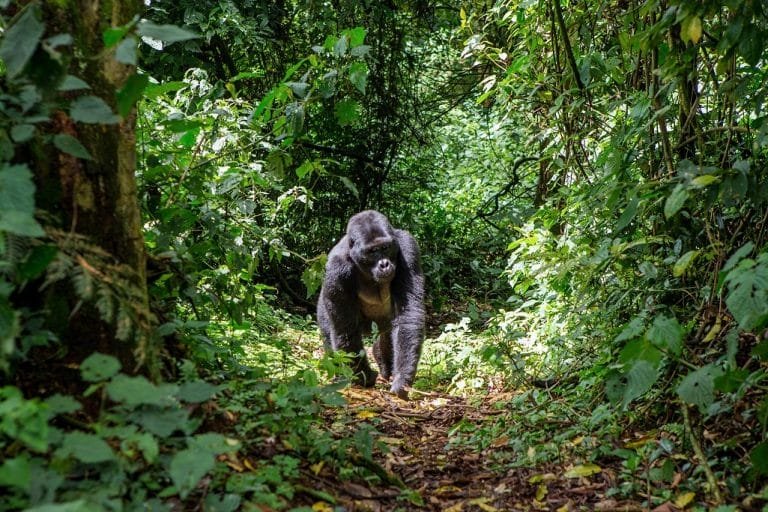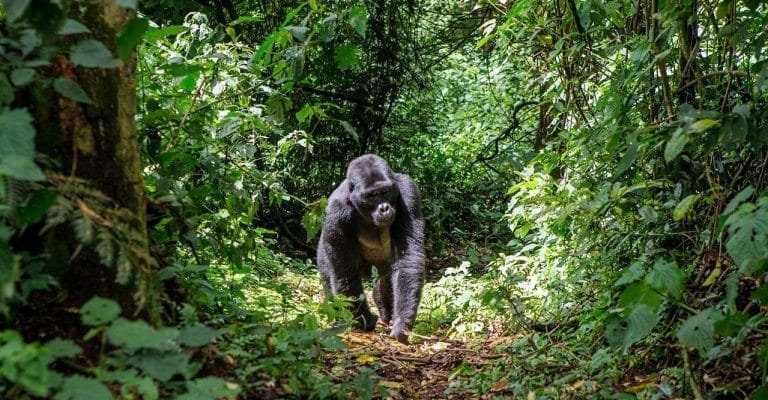
Zorillas are usually somewhat elusive, hiding away in their cozy burrows during the day and coming out at night. But where exactly do they choose to live? In this article, let’s dive deep into their habitats and distribution, unpacking everything you need to know about where zorillas make their homes.
Understanding Zorillas
Before we get into their habitats, it helps to know a bit more about zorillas themselves. These little mammals are part of the weasel family, and they have a reputation for being quite feisty! Zorillas have a distinct black-and-white coloration, which makes them look a lot like skunks. This striking appearance plays a significant role in their survival. When threatened, they can spray a foul-smelling liquid to deter predators.
Zorillas are often mistaken for other animals, but they have unique characteristics that set them apart. For instance, they have long, slender bodies and short legs, making them quite agile. Their sharp claws help them dig burrows where they can hide from predators like birds of prey and larger mammals. So, with this understanding of their nature, let’s explore where these unique creatures live.
Habitat Preferences of Zorillas
Zorillas are pretty adaptable when it comes to habitat. They tend to favor a mix of grassy plains, savannas, and woodlands. This adaptability means they can thrive in various environments across Africa, from the cooler highlands to the hotter lowland areas. **But why do they prefer these habitats?**
Firstly, grassy plains offer plenty of cover and an abundance of food. Zorillas primarily eat insects, small rodents, and occasionally fruit. These habitats provide the right resources for their diet. Secondly, having places to hide is crucial for their survival. The grasses and underbrush give them the protection they need while hunting for food.
Interestingly, zorillas also dig elaborate burrows. These are not just homes but also places to store food and escape from predators. The burrowing behavior helps them create a safe environment, making their habitat even more secure.
Geographical Distribution of Zorillas
Now, if you’re wondering where to find zorillas, they primarily inhabit parts of **Sub-Saharan Africa**. They are most commonly spotted in countries like South Africa, Namibia, Botswana, and Angola. However, their range isn’t just limited to these areas; they can also be found in parts of Central Africa.
Their geographical distribution is closely tied to the availability of suitable habitats. For instance, in regions with abundant grasslands and occasional patches of woodland, you’ll likely see these animals thriving. They avoid dense forests and arid desert areas since these environments don’t provide the cover and food sources they need.
You might be curious about whether they can adapt to urban areas. While zorillas prefer their natural habitats, they can sometimes be found near agricultural fields or human settlements, especially if there’s food available.
Climate Considerations for Zorilla Habitats
Climate plays a crucial role in determining where zorillas can thrive. They generally prefer **temperate climates** and can be found in areas with both moderate temperatures and seasonal variations. This means they enjoy both warm summers and mild winters.
Extreme weather, such as heavy rainfall or drought, can influence their distribution. For example, prolonged heavy rains can lead to flooding, which might damage their burrows and food sources. Consequently, zorillas may move to drier areas where the availability of food and better living conditions are ensured.
By understanding these climate preferences, we gain insight into how **environmental changes** might impact zorilla populations. Changes in their habitats due to climate variations could lead to shifts in their distribution.
Challenges to Zorilla Habitats
Unfortunately, zorillas face numerous challenges that threaten their natural habitats. One of the primary threats is **habitat destruction**. As human populations expand, they encroach on the lands zorillas call home. Urban development, agriculture, and deforestation can limit the spaces available for these animals.
Additionally, environmental factors like climate change are creating new challenges. Changes in temperature and precipitation patterns can disrupt the delicate balance of their ecosystems, affecting food availability and breeding grounds.
Let’s not forget about **road traffic** as another significant danger. As more roads are built through their habitats, zorillas often fall victim to speeding vehicles. Awareness and conservation efforts are essential to protect these unique creatures and the places they live.
Conservation Efforts and Zorilla Protection
To help protect zorillas and their habitats, various conservation efforts are underway. Organizations focus on habitat conservation to ensure these animals have space to thrive. This includes creating protected areas and wildlife reserves where zorillas can roam freely without the risks of human interference.
Education plays a vital role in these efforts. Many conservation groups aim to raise awareness about the importance of preserving natural habitats and the impacts of human activities. By informing local communities about zorillas and their roles in the ecosystem, it’s possible to foster a sense of stewardship that benefits both the animals and people.
Supporting sustainable practices in agriculture and land use can also be beneficial. When farmers understand the ecological significance of preserving natural habitats, they can implement strategies that benefit both wildlife and their livelihoods.
Zorillas are remarkable animals that play important roles in their ecosystems. By understanding where they live and the challenges they face, we can work to protect these fascinating creatures and their habitats. From savannas to woodlands, zorillas remind us of the beauty and diversity of nature, encouraging us to preserve the environments that sustain them.
As we continue to learn about these elusive animals, let’s advocate for their protection and the conservation of the land they depend on. By championing awareness, we can help ensure that future generations can also appreciate and admire zorillas and their unique homes.

